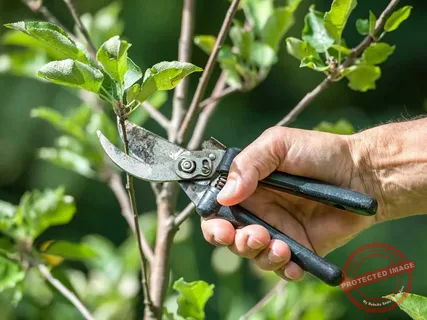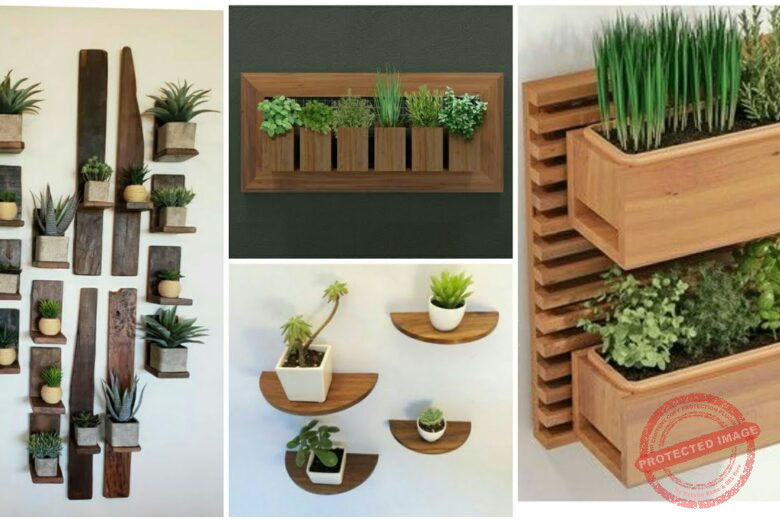Parsley, with its bright green leaves and fresh, aromatic flavor, is a staple herb in many kitchens worldwide. It’s not only valued for its culinary uses but also for its numerous health benefits, including being rich in vitamins A, C, and K. While parsley is commonly grown outdoors in gardens, it is also an excellent candidate for indoor cultivation. Growing parsley indoors allows you to have a fresh supply of this versatile herb year-round, regardless of the weather conditions outside.
Indoor gardening offers several advantages, such as the ability to control environmental factors like light, temperature, and humidity. This control can lead to more consistent and higher-quality harvests compared to outdoor gardening. Additionally, growing parsley indoors can save space and reduce the risk of pests and diseases that often plague outdoor plants. Whether you live in an urban apartment with limited outdoor space or simply want the convenience of having fresh herbs at your fingertips, indoor parsley cultivation is a practical and rewarding endeavor.
In this ultimate guide, we will explore the essential steps and considerations for successfully growing parsley indoors. From selecting the right variety and preparing the soil to ensuring adequate light and watering, we’ll cover everything you need to know to cultivate a thriving indoor parsley garden. We’ll also discuss common challenges and solutions, as well as tips for harvesting and using your homegrown parsley. By the end of this guide, you’ll be equipped with the knowledge and confidence to grow parsley indoors and enjoy its fresh flavor and health benefits all year long.
How to Choose the Right Parsley Variety
This is how to can choose the right Parsley to grow Indoors;
Curly Leaf vs. Flat Leaf
Parsley comes in two main varieties: curly leaf (Petroselinum crispum) and flat leaf, also known as Italian parsley (Petroselinum crispum neapolitanum). Each type has its unique characteristics and uses. Curly leaf parsley has ruffled leaves and is often used as a garnish due to its decorative appearance. It has a mild flavor that complements a variety of dishes. Flat leaf parsley, on the other hand, has broader, more robust leaves and a stronger flavor, making it a favorite in Mediterranean and Middle Eastern cuisines. When choosing a variety for indoor growth, consider your culinary preferences and how you plan to use the parsley.
Best Varieties for Indoor Growing
While both curly leaf and flat leaf parsley can be grown indoors, certain varieties are better suited for indoor conditions. For curly leaf parsley, ‘Moss Curled’ and ‘Extra Curled Dwarf’ are popular choices due to their compact growth habit and attractive appearance. For flat leaf parsley, ‘Giant of Italy’ and ‘Flat Leaf Italian’ are excellent options known for their vigorous growth and intense flavor. These varieties thrive in container environments and are relatively easy to manage indoors.
Seed Selection and Preparation
Starting parsley from seeds is a common and cost-effective method. When selecting seeds, opt for high-quality, organic seeds from a reputable supplier. Parsley seeds have a hard outer shell, which can delay germination. To speed up the process, soak the seeds in warm water for 24 hours before planting. This step helps to soften the seed coat and promotes faster sprouting. After soaking, drain the seeds and allow them to dry slightly before sowing.
Preparing for Indoor Cultivation
Choosing the Right Containers
Selecting the appropriate containers is crucial for the successful growth of indoor parsley. Parsley has a relatively deep root system, so choose pots that are at least 6-8 inches deep to accommodate root development. Containers should also have drainage holes to prevent waterlogging, which can lead to root rot. Terra cotta pots are a good choice as they allow for better air circulation around the roots. If using plastic or ceramic pots, ensure they have adequate drainage.
Soil and Fertilization
Parsley thrives in well-draining, nutrient-rich soil. A high-quality potting mix formulated for herbs or vegetables is ideal. You can also create your own mix by combining equal parts of garden soil, compost, and perlite or sand to enhance drainage. Fertilization is important to support the growth of your parsley plants. Use a balanced, water-soluble fertilizer with equal parts nitrogen, phosphorus, and potassium every four to six weeks. Organic options like fish emulsion or seaweed extract can also be beneficial.
Sowing and Germination
To sow parsley seeds, fill your chosen containers with the prepared soil mix, leaving about an inch of space at the top. Scatter the seeds evenly over the soil surface, then cover them with a thin layer of soil, about 1/4 inch deep. Water the soil gently to moisten it without disturbing the seeds. Parsley seeds require warmth and consistent moisture to germinate, so place the containers in a warm, sunny location or use a seedling heat mat to maintain a temperature around 70°F (21°C). Covering the containers with a plastic dome or plastic wrap can help retain humidity and encourage germination, which typically takes 2-3 weeks.
Providing Adequate Light
Natural Light Requirements
Parsley requires ample light to grow healthy and robust. Ideally, your indoor parsley plants should receive 6-8 hours of direct sunlight per day. South-facing windows are the best option as they provide the most consistent light throughout the day. If a south-facing window is not available, east or west-facing windows can also work, though you may need to supplement with artificial lighting to ensure your plants receive enough light.
Supplementing with Artificial Light
In many indoor settings, natural light alone may not be sufficient to meet the needs of your parsley plants. Supplemental artificial lighting can bridge this gap. Full-spectrum LED grow lights are an excellent choice as they provide the necessary wavelengths of light for photosynthesis and healthy plant growth. Position the lights about 6-12 inches above the plants and keep them on for 12-16 hours a day to mimic natural daylight conditions. Using a timer can help maintain a consistent lighting schedule.
Light Positioning and Maintenance
Proper positioning of your light sources is key to ensuring even light distribution and preventing leggy growth. Place the grow lights directly above the plants and adjust the height as the plants grow to maintain the optimal distance. Rotate the pots periodically to ensure all sides of the plants receive equal light exposure. Clean the light fixtures regularly to remove dust and ensure maximum light penetration.
Watering and Humidity
Understanding Watering Needs
Parsley requires consistent moisture to thrive, but overwatering can lead to root rot and other issues. Water the plants when the top inch of soil feels dry to the touch. Use room temperature water and water the soil thoroughly until it drains out of the bottom of the pot. Discard any excess water in the saucer to prevent waterlogging. During hot or dry periods, you may need to water more frequently, while in cooler, more humid conditions, less frequent watering may be necessary.
Maintaining Humidity Levels
Parsley prefers a moderately humid environment, with humidity levels around 50-60%. Indoor environments, especially in winter, can be quite dry, so it’s important to monitor and maintain appropriate humidity levels. You can increase humidity by placing a tray of water near the plants, using a humidifier, or misting the plants with water regularly. Grouping plants together can also help create a more humid microenvironment.
Signs of Watering Issues
Being attentive to the signs of watering issues is crucial for the health of your parsley plants. Overwatering can cause yellowing leaves, wilting, and a sour smell from the soil. Underwatering, on the other hand, can result in dry, brittle leaves and stunted growth. Adjust your watering schedule based on these signs and the specific needs of your indoor environment.
Managing Pests and Diseases
Common Pests
Even indoor parsley plants can attract pests. Common indoor pests include aphids, spider mites, and whiteflies. Aphids are small, pear-shaped insects that cluster on new growth and excrete a sticky substance called honeydew. Spider mites are tiny, red or brown insects that spin fine webs on the undersides of leaves. Whiteflies are small, white-winged insects that fly up in a cloud when the plant is disturbed. Regularly inspecting your plants and taking immediate action at the first sign of pests is crucial.
Natural Pest Control Methods
For organic pest control, start by manually removing pests with a strong spray of water or by wiping the leaves with a damp cloth. Introducing beneficial insects like ladybugs or predatory mites can help control pest populations naturally. Insecticidal soap or neem oil sprays are effective against a wide range of pests and are safe for use on edible plants. Apply these treatments according to the manufacturer’s instructions and repeat as necessary.
Preventing and Treating Diseases
Fungal diseases like powdery mildew and root rot can affect indoor parsley plants. To prevent these issues, ensure good air circulation around your plants and avoid overwatering. Water the soil directly rather than the leaves to reduce humidity around the foliage. If you notice signs of disease, such as white powdery spots or wilting, remove affected leaves and treat the plant with an appropriate fungicide. Maintaining a clean growing environment and using sterilized tools can also help prevent disease spread.
Harvesting and Using Indoor Parsley
When to Harvest
Parsley can be harvested once the plant has developed several sets of true leaves, usually 70-90 days after planting. For continuous harvest, pick the outer leaves first, allowing the inner leaves to continue growing. Regular harvesting encourages bushier growth and prevents the plant from becoming leggy. Avoid cutting more than one-third of the plant at a time to ensure it continues to grow healthily.
Harvesting Techniques
Use clean, sharp scissors or pruning shears to cut the stems close to the base of the plant. Harvesting in the morning, after the dew has dried but before the heat of the day, ensures the best flavor and reduces stress on the plant. For the best flavor, use the harvested parsley immediately or store it properly to retain its freshness.
Storing Fresh Parsley
Freshly harvested parsley can be stored in the refrigerator for up to two weeks. To keep it fresh, wrap the stems in a damp paper towel and place them in a plastic bag or an airtight container. Alternatively, you can store parsley like cut flowers, with the stems in a glass of water and a plastic bag loosely covering the leaves. Change the water every few days to keep it fresh.
Preserving Parsley for Long-Term Use
To preserve parsley for long-term use, consider freezing or drying it. For freezing, chop the parsley and place it in ice cube trays with a little water or olive oil. Once frozen, transfer the cubes to a freezer bag for convenient use in recipes. For drying, bundle the stems together and hang them upside down in a dark, well-ventilated area. Once completely dry, crumble the leaves and store them in an airtight container away from direct light and heat.
Conclusion
Growing parsley indoors is a rewarding endeavor that provides a steady supply of fresh, flavorful herbs for your culinary and medicinal needs. By selecting the right variety, preparing the soil and containers properly, and providing adequate light, water, and humidity, you can cultivate healthy parsley plants year-round. Regularly monitoring for pests and diseases, and taking prompt action when necessary, will ensure your indoor parsley garden remains vibrant and productive.
Harvesting parsley at the right time and using proper techniques will maximize the flavor and benefits of your homegrown herb. Whether you use it fresh, frozen, or dried, having a supply of parsley on hand enhances your cooking and supports your health with its rich nutrient content. The knowledge and skills you gain from growing parsley indoors can also be applied to other herbs and plants, expanding your indoor gardening repertoire.
With the tips and strategies outlined in this guide, you are well-equipped to start your indoor parsley garden and enjoy the numerous benefits it offers. Embrace the joy of cultivating your herbs, and experience the satisfaction of adding fresh, homegrown parsley to your favorite dishes.



